Recycle: compost
On October 7, we tidied up the compost bins with the children.
The children shoveled soil from an old pile of soil into a compost bin.
We hope to get our own soil by spring.
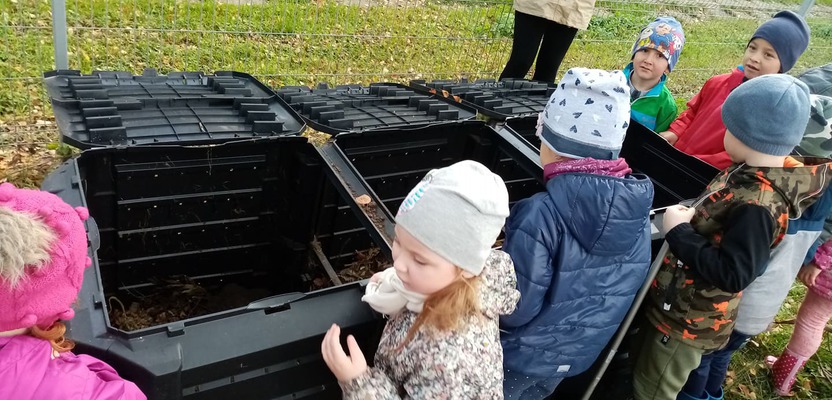
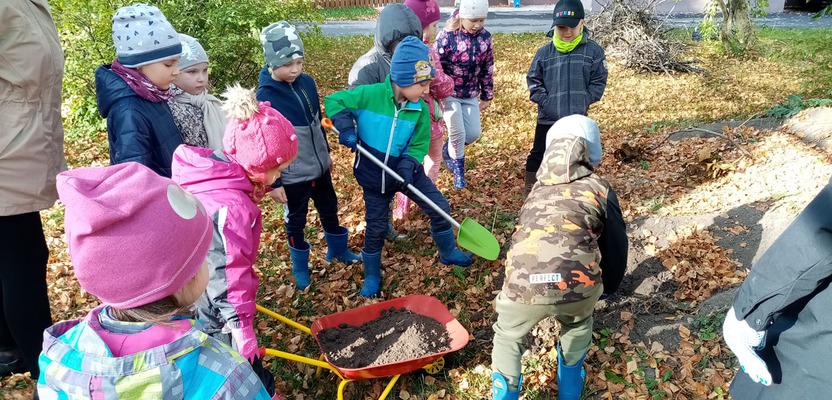
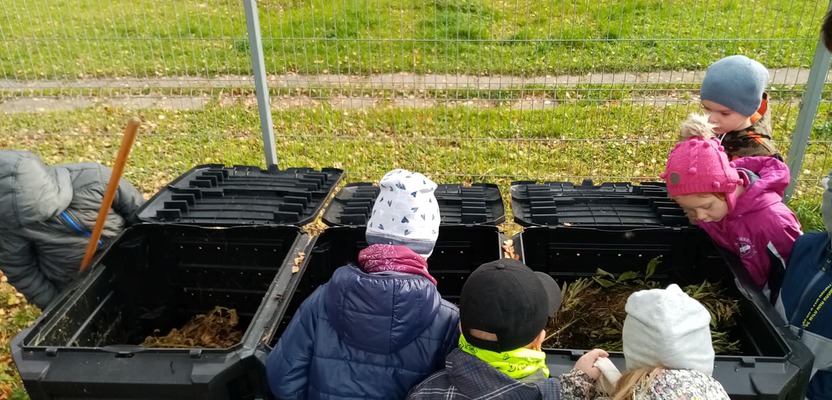
Reuse of natural materials
Ladybugs went to an exhibition (02.10.2020). The name of the exhibition is "Natural garbage or art instead?"
One lady lives 20 km away in Tallinn. His hobby is walking in the woods. She loves the forest very much. While walking in the forest, he sees a lot of natural rubbish (fallen trees, tree bark, moss, tree stumps ...).
For 10 years, the lady has set up an exhibition in her backyard. The exhibition made us think about how much natural garbage there is in the forest, from which many interesting things can be made. In this example, different characters are made of the material (three bears, Rapunzel, a wolf and a red hat, Kalevipoeg, a mighty man, owls, snakes, an elephant, a black boy, a ballerina, tigers, a cat ...).
Some examples of what we saw :)
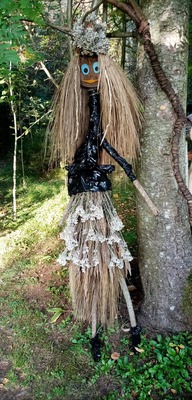
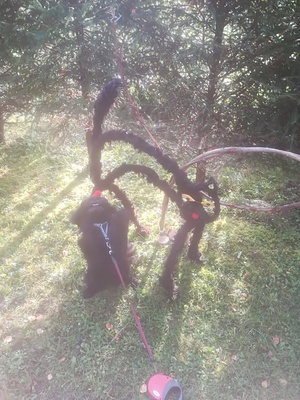
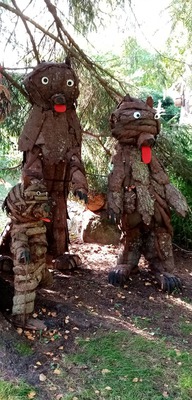
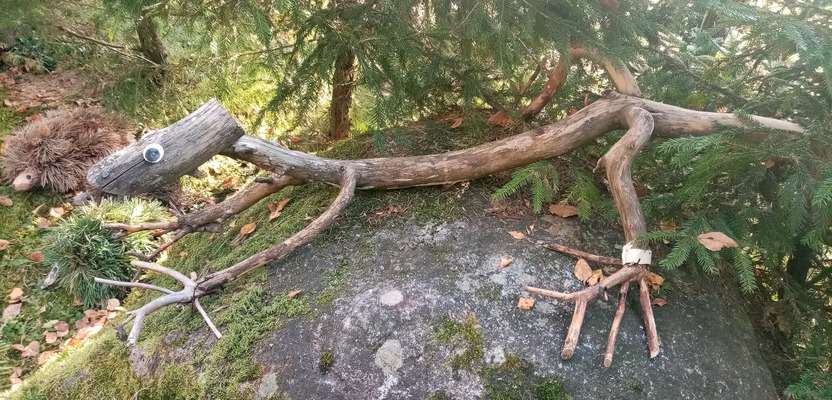
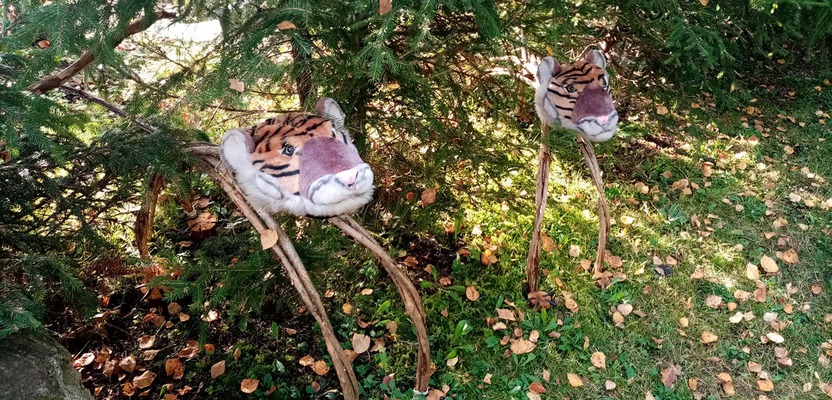
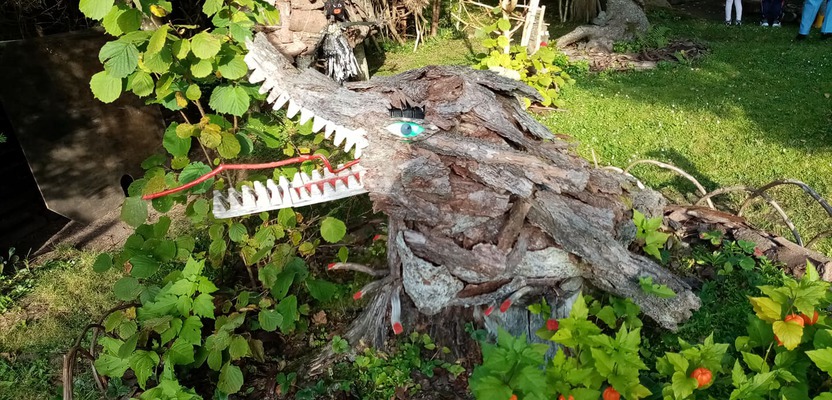
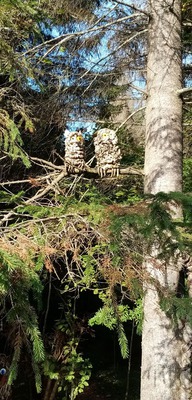
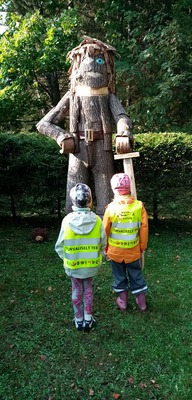
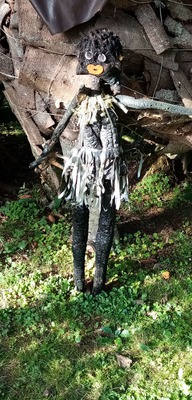
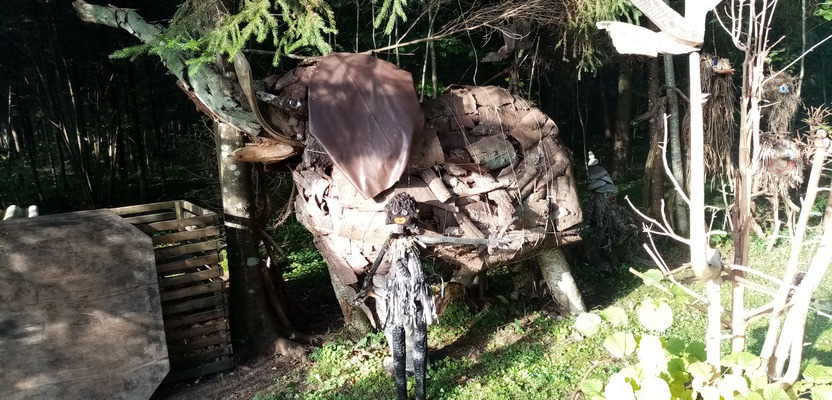
You can find our activities at this link
https://www.slideshare.net/SiretVaarpu/estonian-presentation-water
(October to February 2019/2020)
Let's get to know the water (November 2019)
Children made experiments: How do plants get water from the ground?
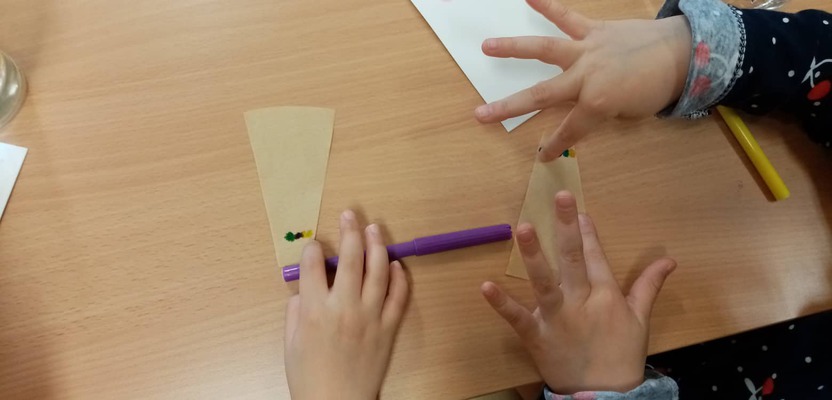
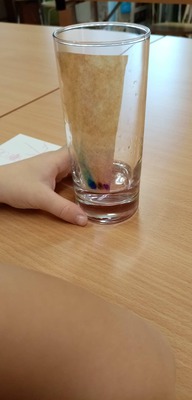
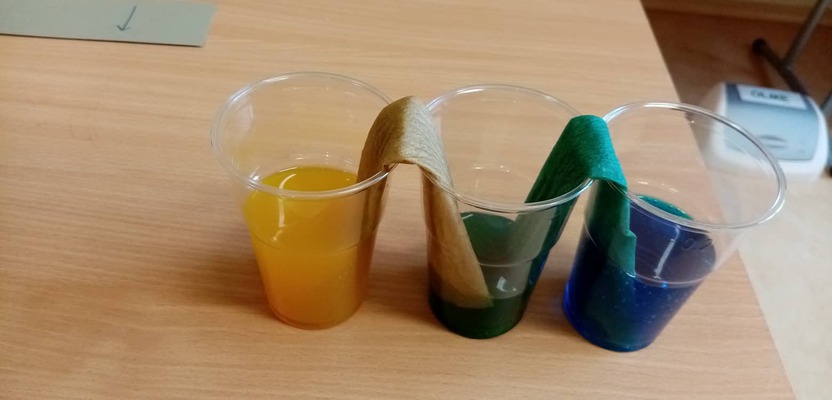
The kindergarten is so excited about the bees. There is a new attraction in the yard. Take a closer look.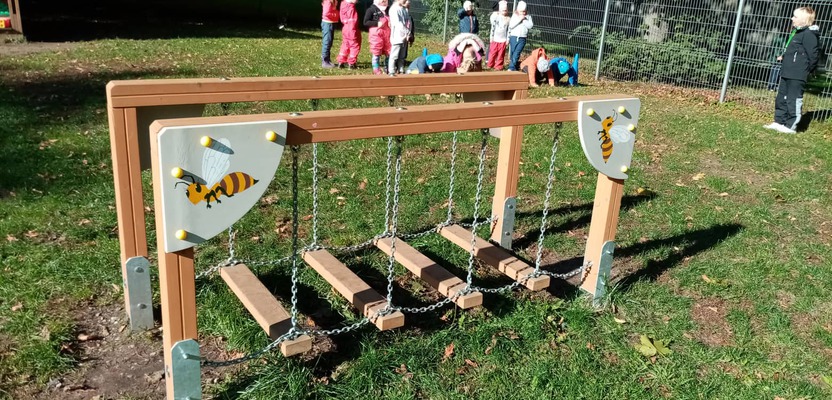
(01.10.2019)
Group Pöialpoisid picked up potatoes. The potato tops were taken to compost. Inside, the potatoes were washed and chopped. Most children did not love the taste of potatoes. A couple of children thought that the potatoes were tasty.
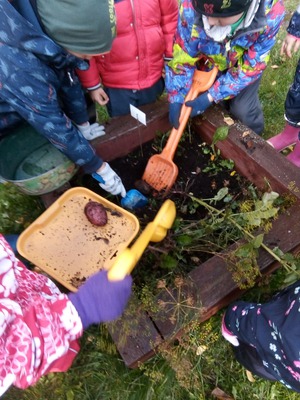
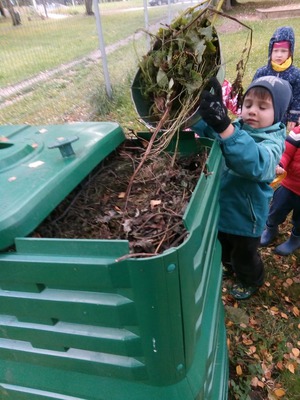
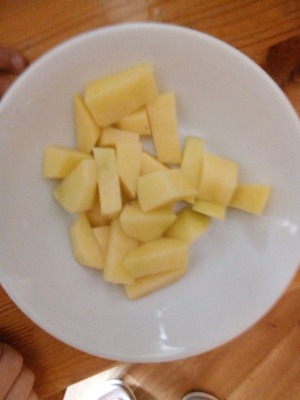
(23.09.2019)
A little overview of flowers growing in the nursery.
Flowering flowers helped attract bees. Children know that bees can harvest pollen from flowers.
The flowers begin to wither in September and the bees also fall asleep.
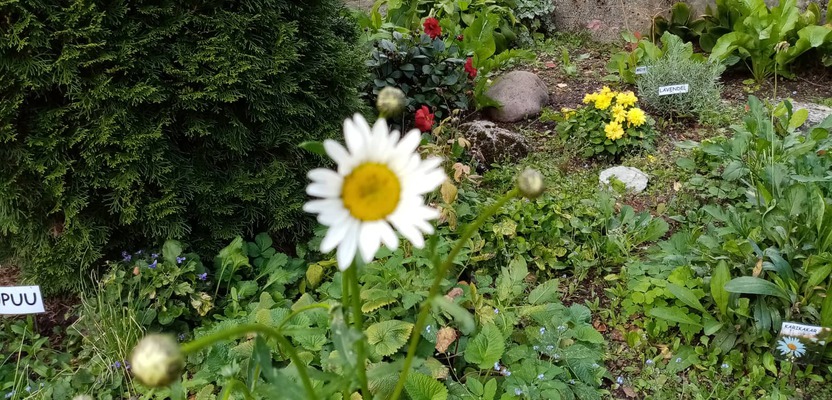
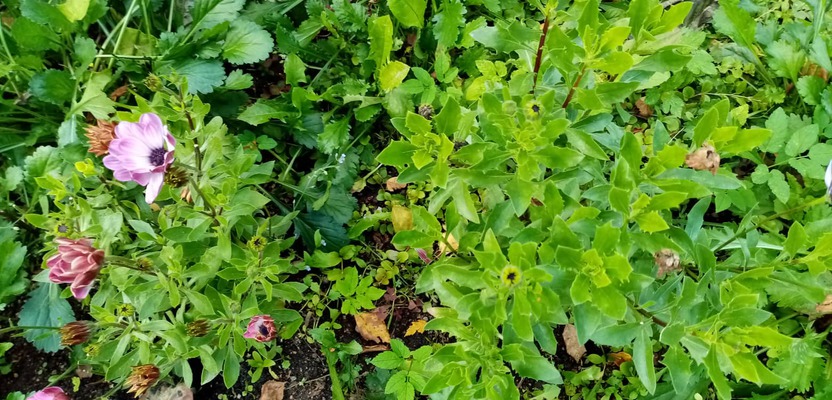
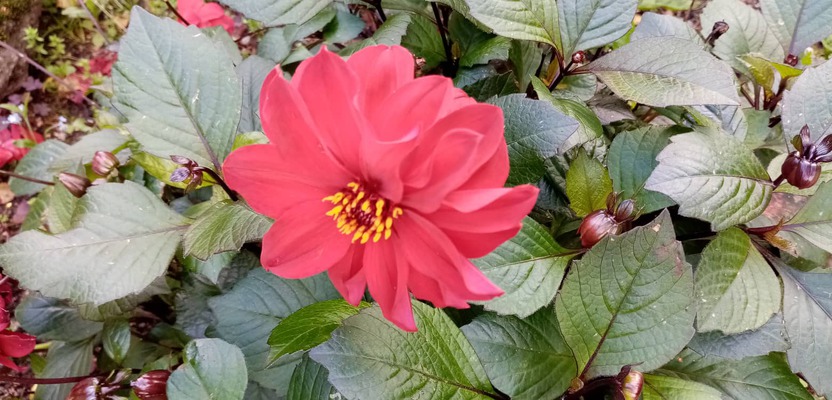
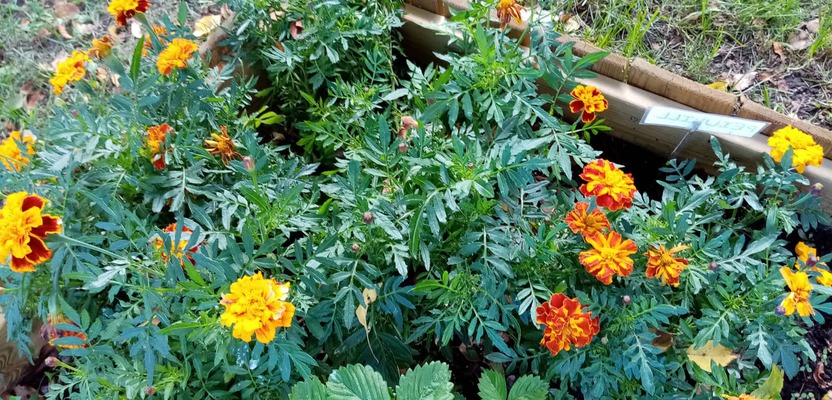
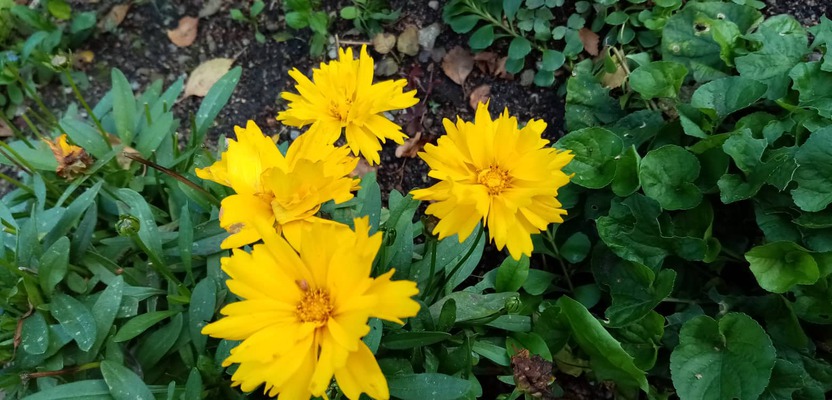
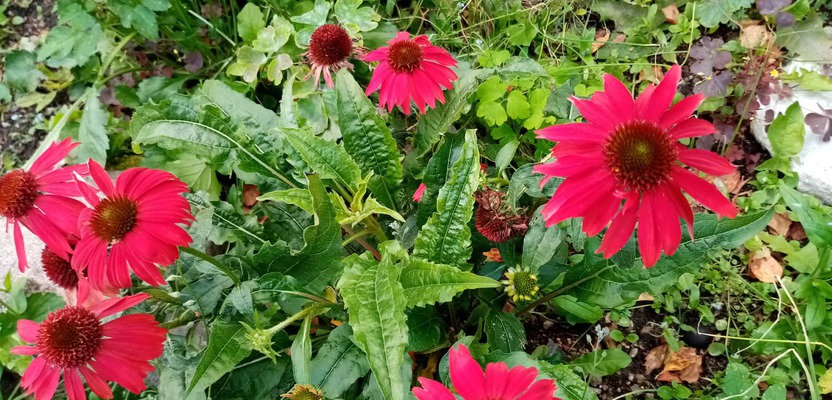
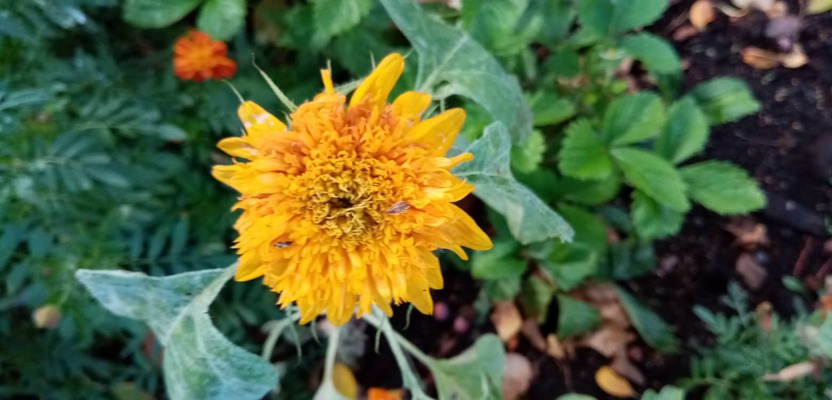
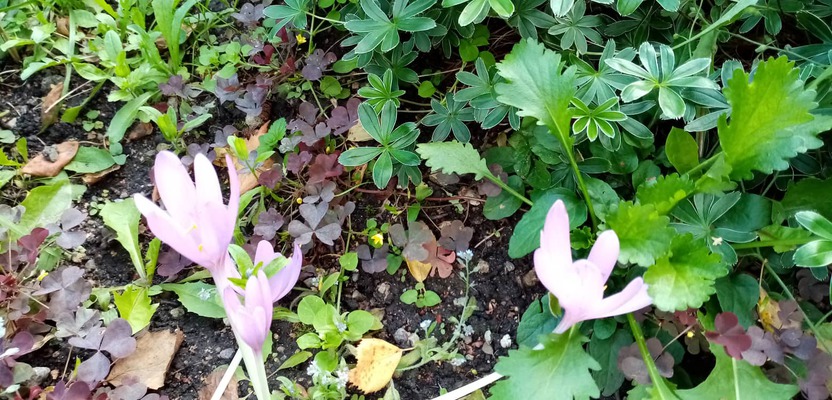
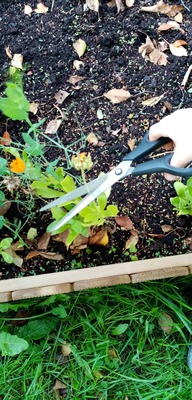 The children, together with the teacher, can cut the blooms that have withered
The children, together with the teacher, can cut the blooms that have withered
As we grow a lot of food in the garden, an unexpected story has happened. We have rabbits that have settled down. We found 3 hares in the garden. The mother rabbit goes to feed them. We are happy to be able to follow their edits.
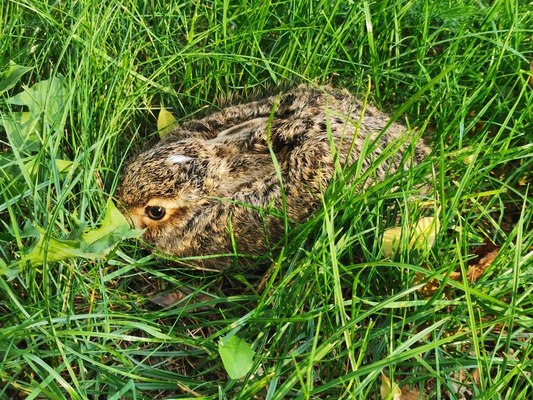
(05.09.19)
The ladybug kids reminded them of the potato plant they had just planted. Each team pulled out the potatoes they had grown.
The potatoes were placed in a bucket. The potatoes were studied with the teacher. How many potatoes are there? What color are potatoes? What is the Biggest Potato? What can you do with potatoes?
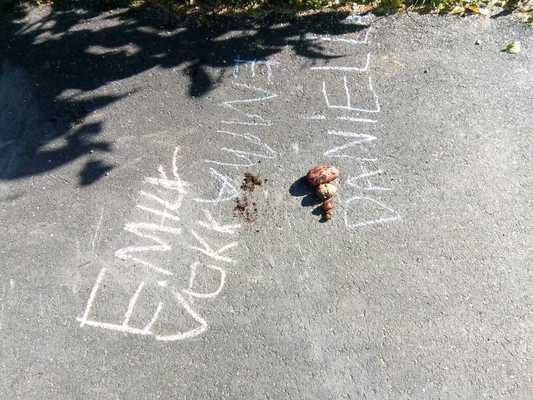
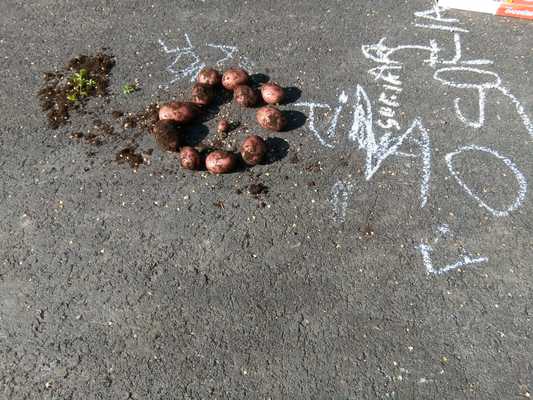
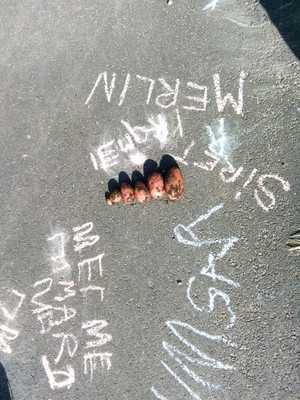
The potatoes were brought to the chef and the chef made delicious food for the children.
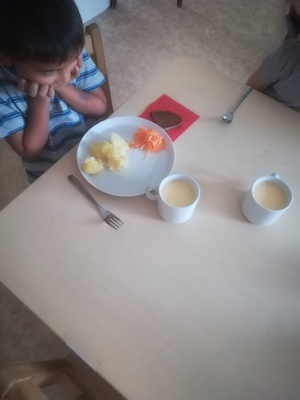
Oh, surprise. The pea has recovered. In August, we discovered that the pea plant was gaining strength. Looking forward to what's coming out of here.
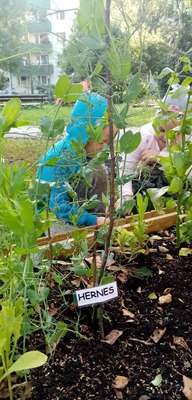
Investigation of carrots (09.08.2019)
The children pulled some carrots out of the box with the teacher
The first one to pull out was a carrot that was white. Why is he white? Nobody could explain it.
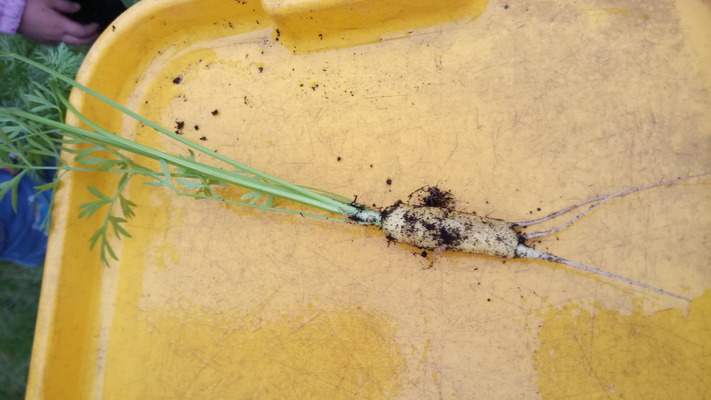
Another interesting carrot was one with holes in it. Who ate it?
Children thought squirrel or rabbit.
But who was it? Must investigate!
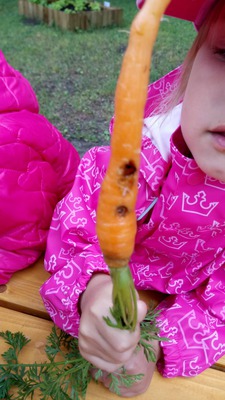
The extracted carrots were compared. Which is the biggest? Which is the longest? The color and the useful properties of the carrot were studied.
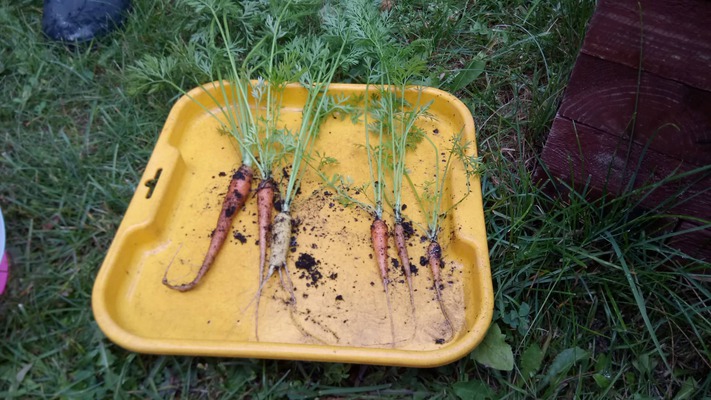
Surely the children washed the carrots clean and we started to taste them ... "We haven't washed our hands," one girl shouted. Yes, really not noticed also the teacher and together was done hand washing.
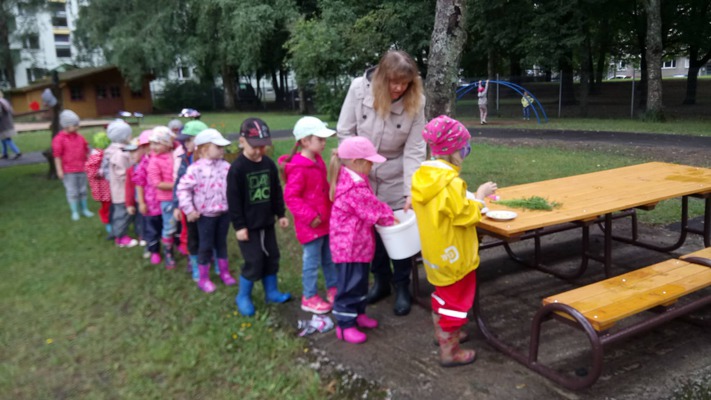
As the carrots were tasting, the children discussed that they were too small and had to grow until the fall! Good luck to them!
The first catch. The beans are ready they were big and white (01.08.2019).
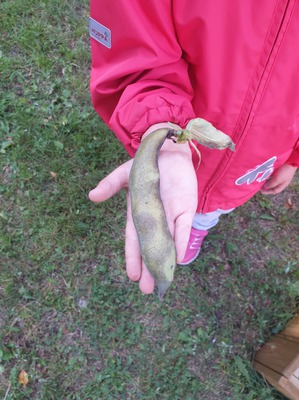
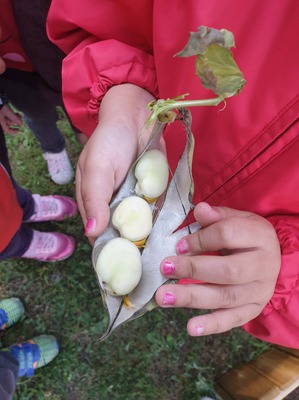
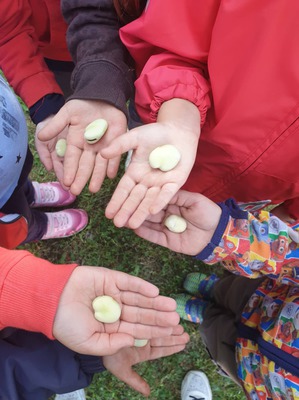
It was very warm at the beginning of July and the plants had to be watered carefully. Most of the plants have survived the heat nicely. Looking forward to the catch. (30.07.2019).
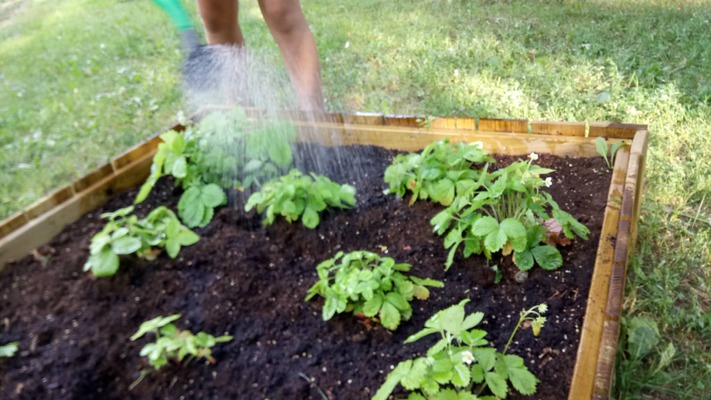
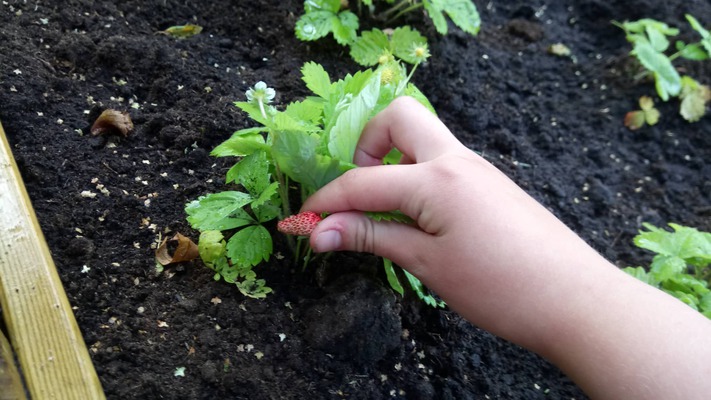
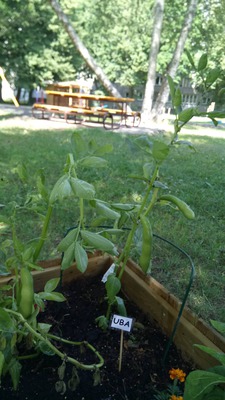
Outdoor herbs and food grow: dill, onion, carrot, strawberries, chives, potatoes: (18.07.2019).
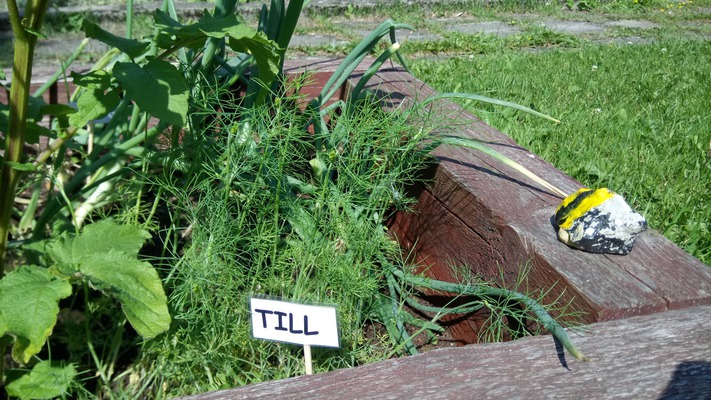
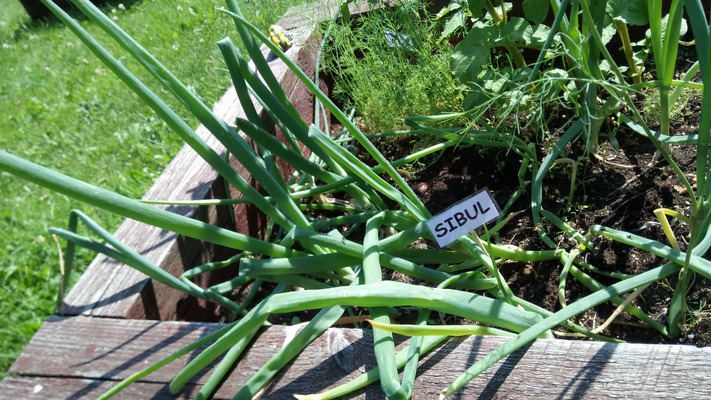
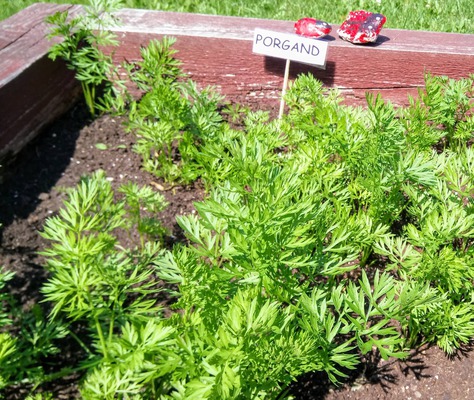
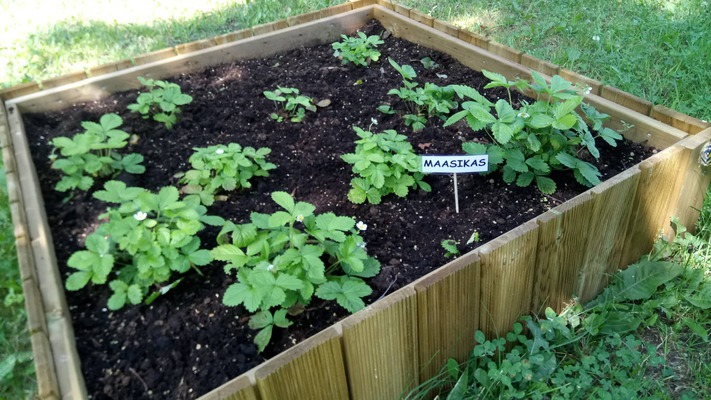
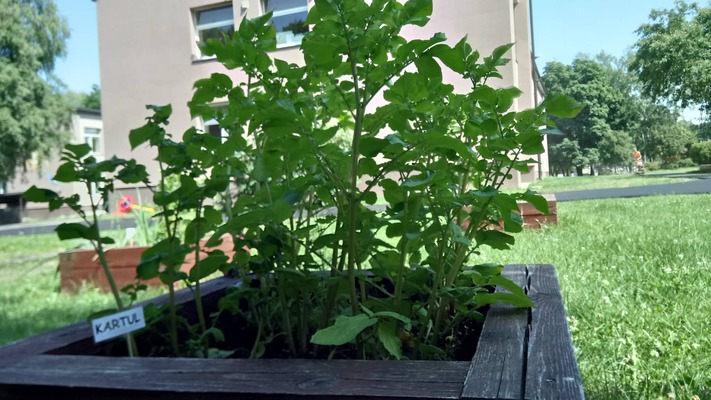
Summer flowers are planted in the garden to attract bees:
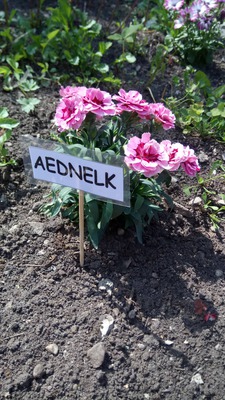
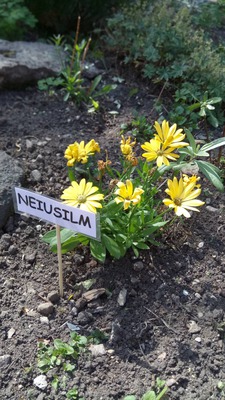
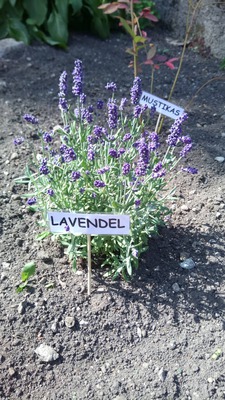
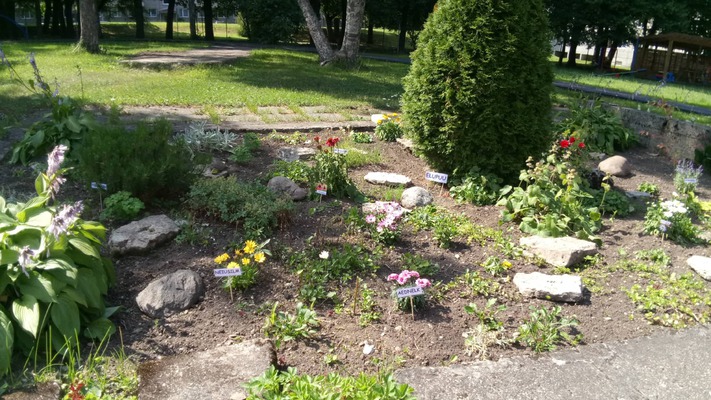
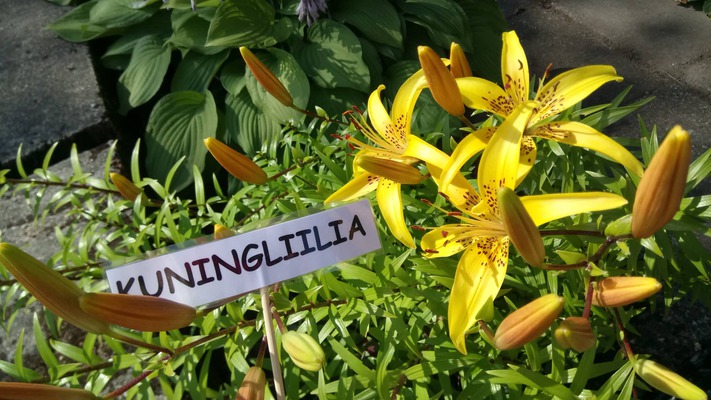
Plants have grown a lot during the summer. After coming to the kindergarten after the summer holidays, some children were very surprised: “Come and see how big the sunflower has grown. Come all here", said one boy to others. (18.07.2019)
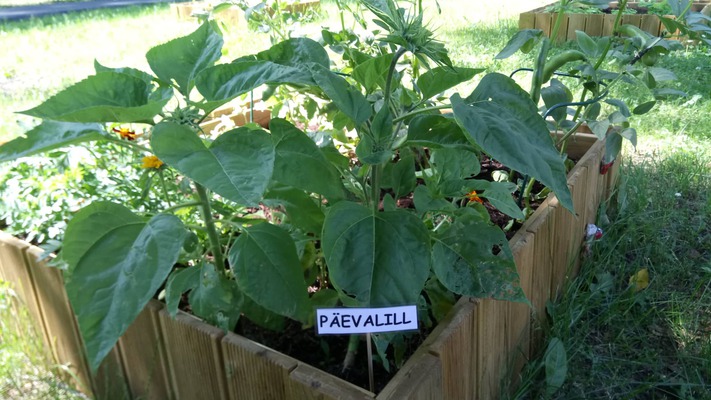
Most of the plants have started to grow well. Unfortunately, the peas didn't go so well. They dried up. The site was too sunny.
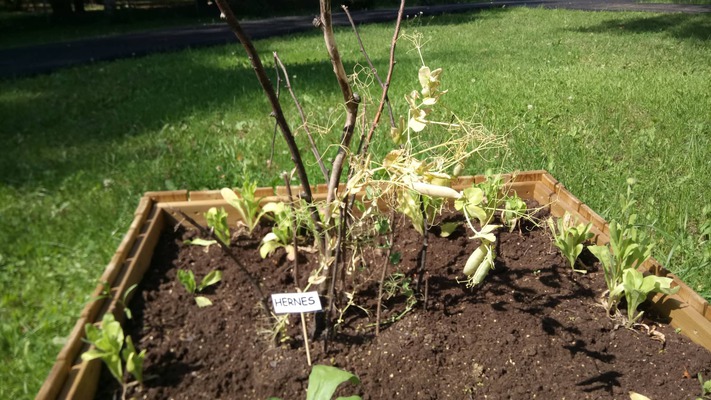
Group Lotte made a cartoon of a bee. Children aged 6-7.
The bee is sleeping in her hive. He has a friend LOTTE. Lotte is a dog. Together they find flowers. Bees make honey. Lotte gets a can of honey. In cartoon is recognizable by all 4 seasons. You can view the cartoon here:
https://www.youtube.com/watch?v=wxcEz_Ngiq0&t=7s
In the yard there are growing onions, peppers, peas, beans. Growth is monitored daily by going outside. (27.05.2019).
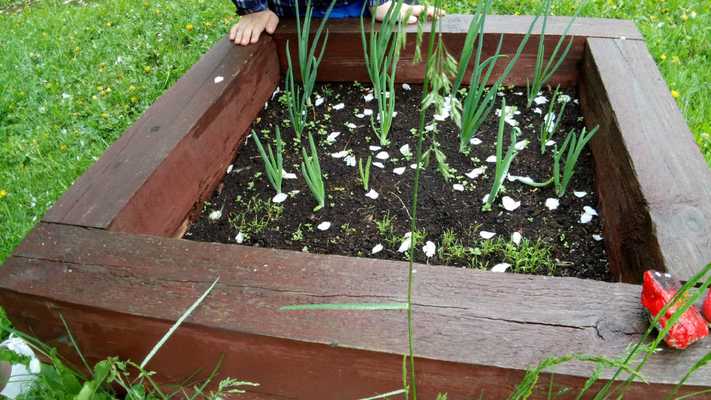
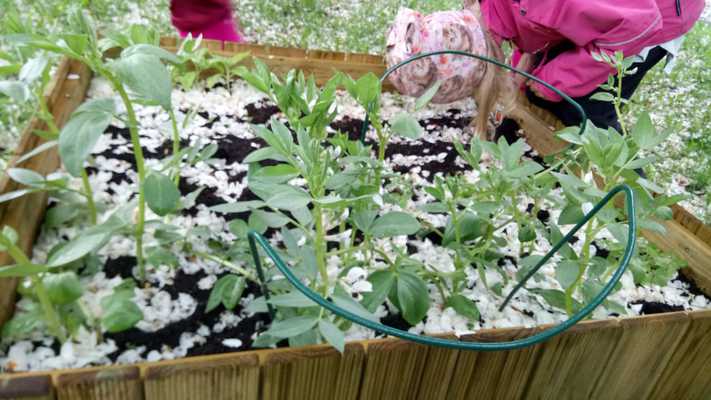
In time, it is noticeable that children are forgetting of what is growing in the box, they have to be reminded...
what the plant needs to grow is clearer.
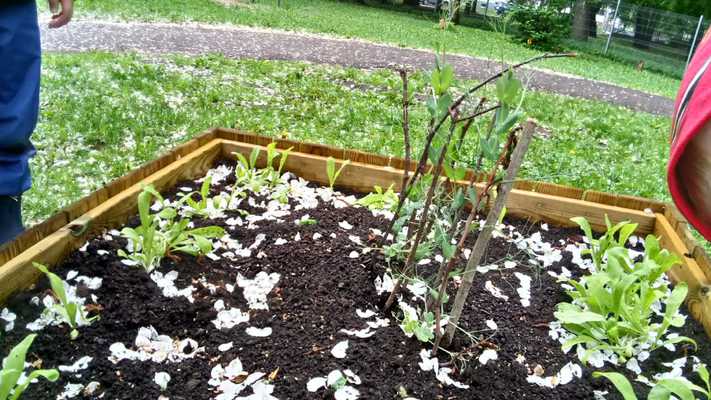
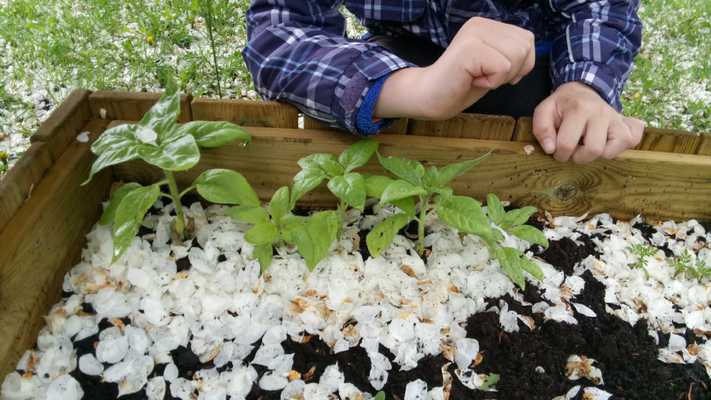
Before the summer holidays, much was learned outdoors. Children were introduced to the life of insects in nature. It was said that bees make honey. The kids helped the bee pick the dandelion.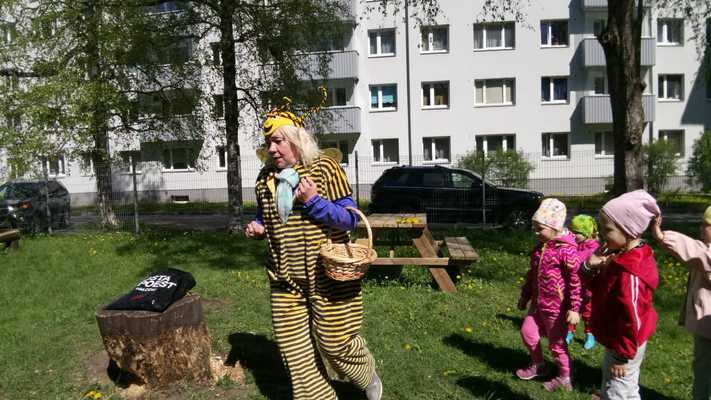
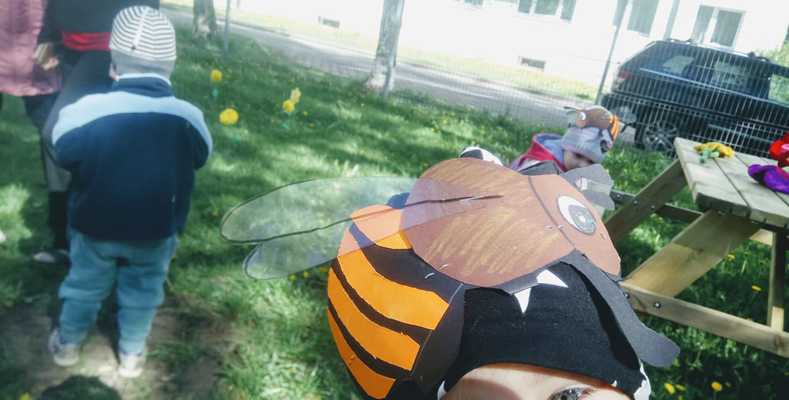
Many teachers played a bee on the kids, wearing a bee costume.
Once, the bee was accompanied by a friend: a ladybug.
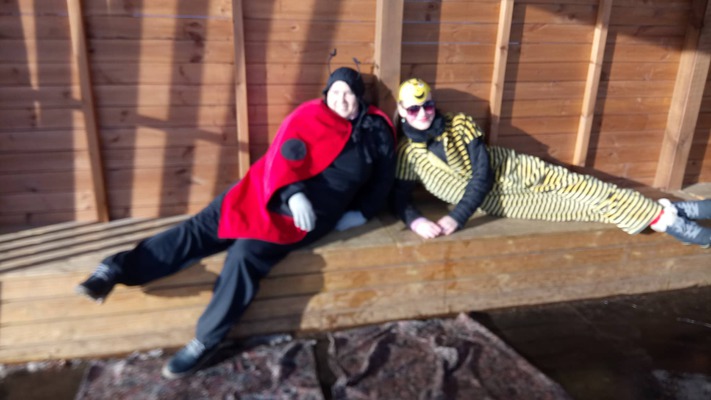
One of the bees introduced children, birds, and insects to the tree. For example, the squirrel was introduced. A thank for that the tree was so useful for the living beings, the trees were dipped.
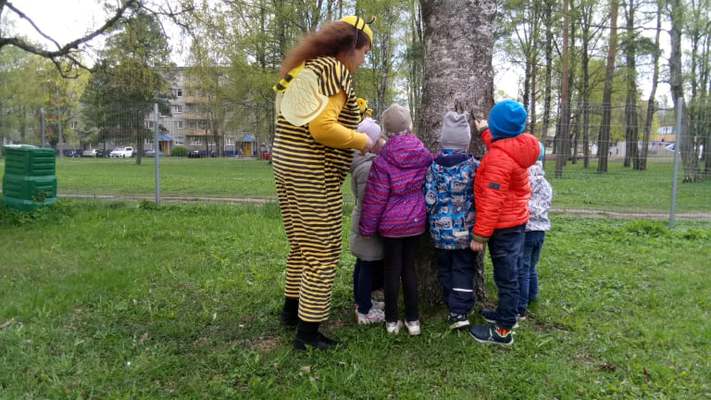
5-6 year old children painted bees and pasted them wings...
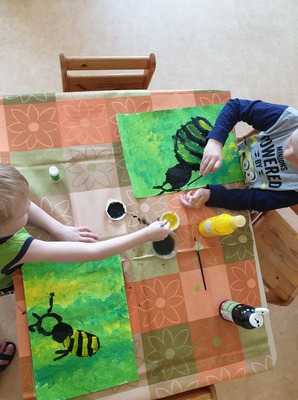
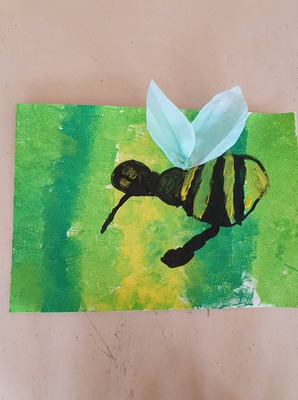
Children aged 5-6 studied mathematics....
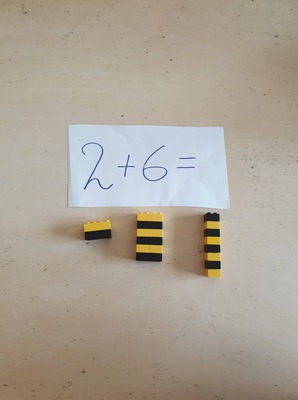
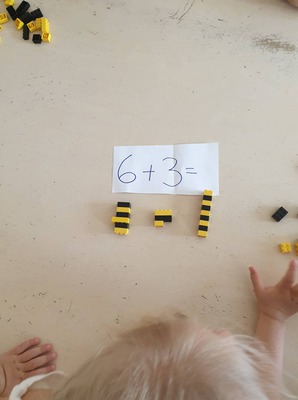
We made a cartoon of bee and dog girl friendship. The cartoon featured 4 seasons and the life of a bee.
The cartoon learned that in the winter the bee was sleeping.
Find out that bees communicate in dancing.
Bees make honey.
You can also see the seasons change.
https://www.youtube.com/watch?v=wxcEz_Ngiq0&feature=youtu.be&fbclid=IwAR2bXCgMCcPEAin3l6xZgNkRzFrMDtEsJePj4S_MN0r2wgyKfITj-CVjmA4
The children Kalakesed group studied the sprouting of the Mungbau with a magnifying glass.
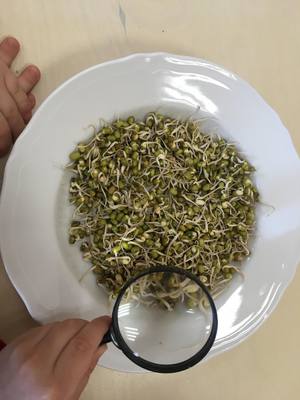
The Ladybugs kids took the bee and together they were looking for the spring signs.
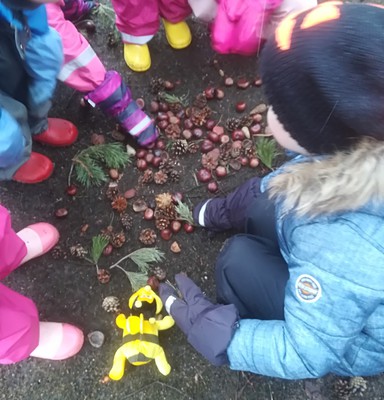
In group Klaabud, kress-salad was grown, and by now most children have already tasted their salad. Tops where the salad grew is very proudly decorated.
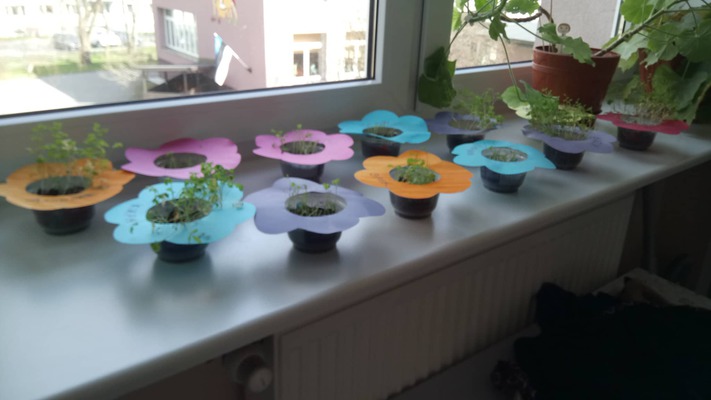
Lotted studied outdoors.The bee and ladybird was painted on the stones. At first, the children had to pick up the stones from their playground and count the stones, and then pick one stone out of the stones. Then pulled the lotus, the millisty insects somebody paints... Ready insects are planned to be attached to outdoor plantsboxes.
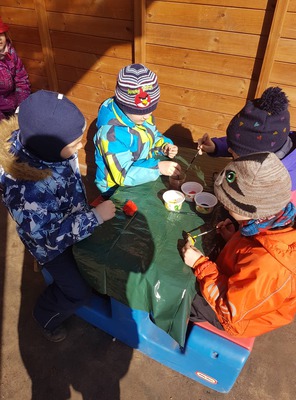
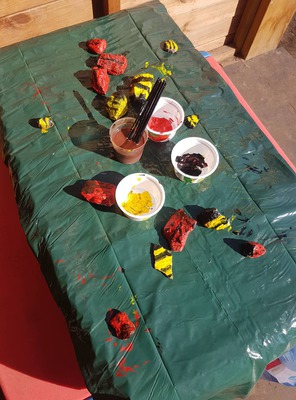
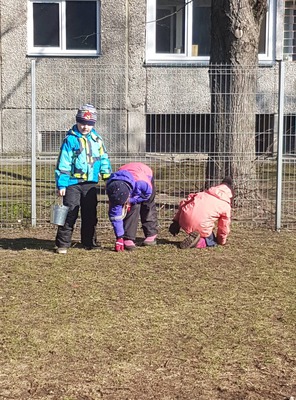
The Ants group experimented with onion. One onion was left in the room and placed in the water and placed on the window sill in the sun. The second onion was put in the yard of his playground and also in the water. The onion grown in the yard was probably still cold and a bit fussy as the result was next…
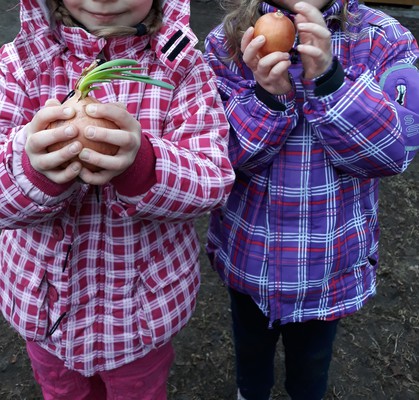
Today (18.04.2019), herbs have grown in groups, and onions are already so lush that children and teachers can make their soups more tasty and colorful.
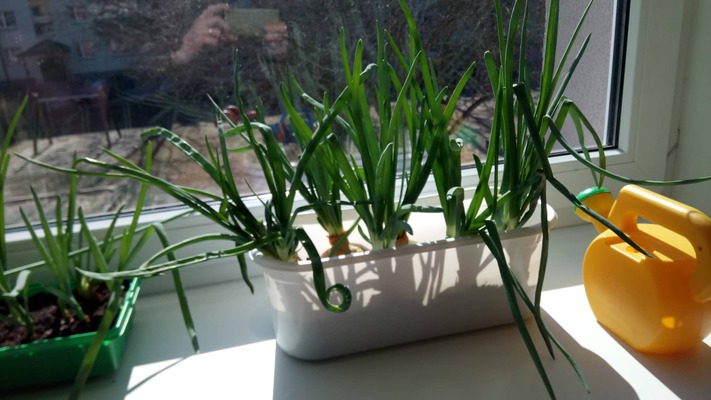
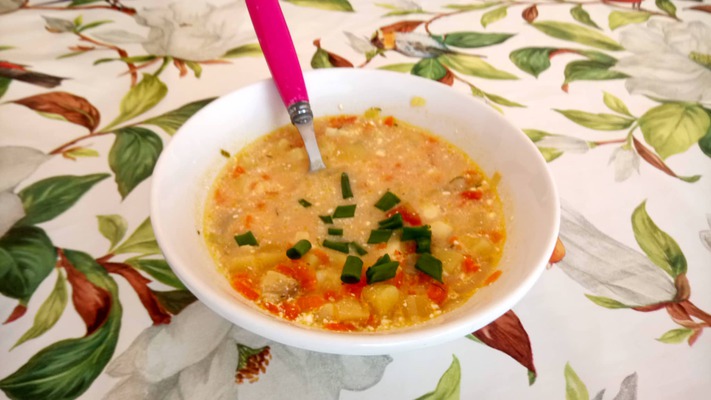
There are also experiments that do not give light to plants and the result is a bit bleak…Only the onion has grown a little. Chives, till, parsley has barely grown.
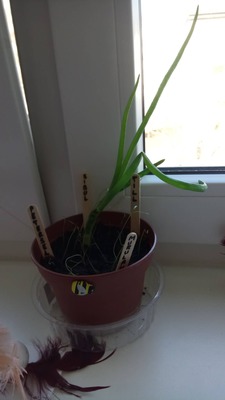
Group Mõmmikud germinated beans. Most beans were placed in the sun on a window sill. Some beans were sheltered from the sun.The children could see that the bean sprouted faster in the sun.
It turned out that without the sun, one bean did not germinate.
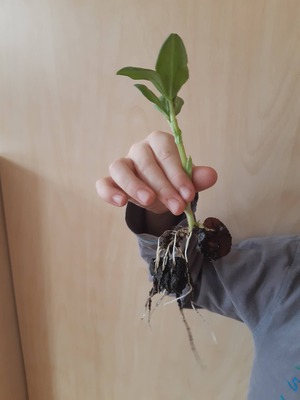
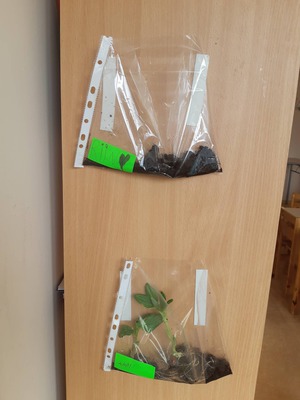
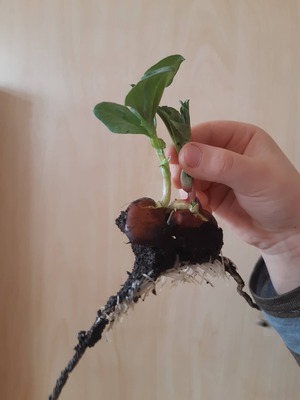
If there is a lot of sun and love then the plant grows... :)
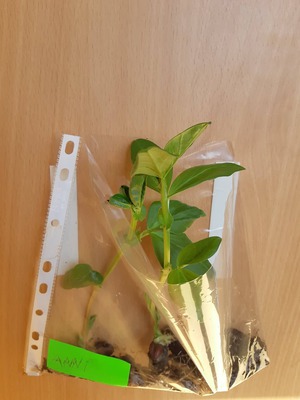
There was a great planting work on March 21 in which all the children participated. We put a larger seed box in the sun and we put a small box out of the sun. Every day, children watch and watering plants. The bulbs and dill were the first to appear. In the sun shade in the box is an onion on the outside. Chives and parsley are still in hiding. We are looking forward to new surprises next week!
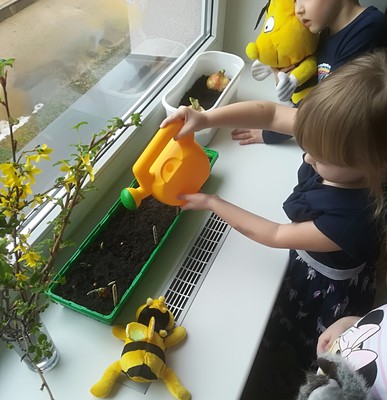
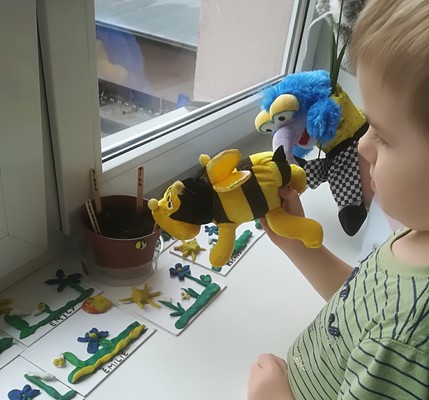
Group of Mesimummud learn about bees, their usefulness, their peculiarities, the food chain.
The most learning about bees was very playful and there were masks, headgear and toys in staging games.
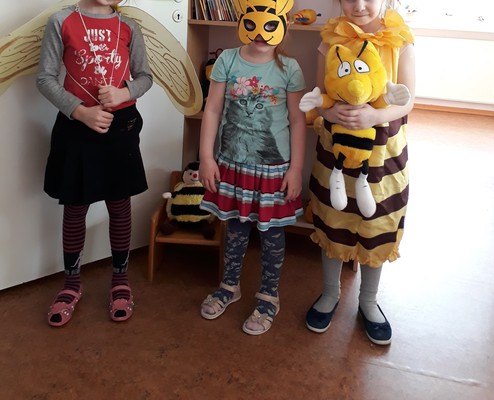
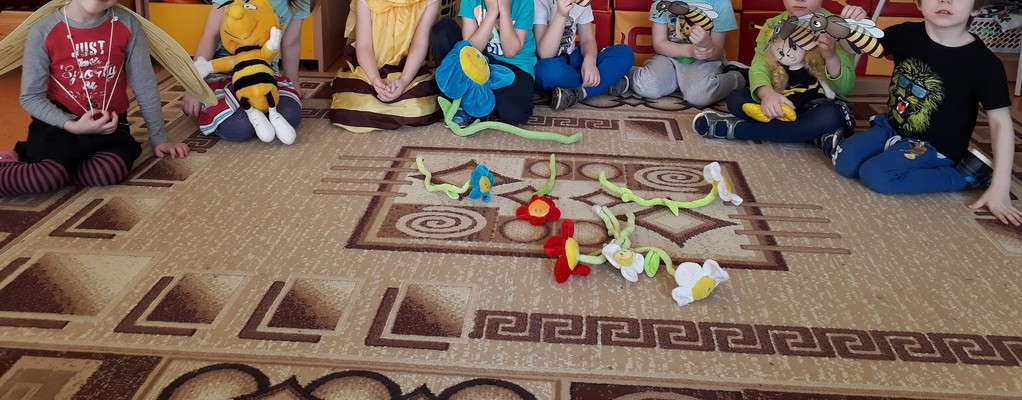
Group Lepatriinud did theater performances in March. The children had a box of toys and a visor.
The bee woke up from hibernation and felt the stomach empty. He started looking for flowers and animals walking on the road, the birds guided the bee's flowers. Finally, the smartest guide was the owl :)
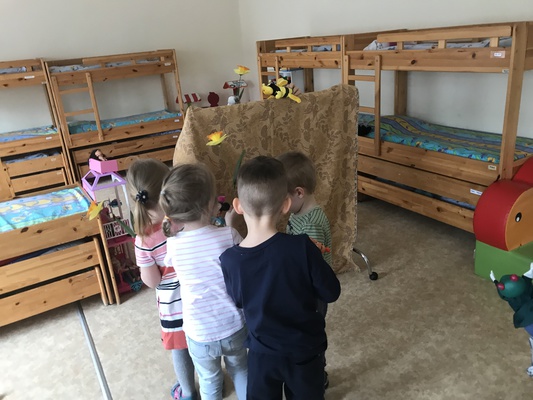
In March two groups where listened the book "Tõnu and bees".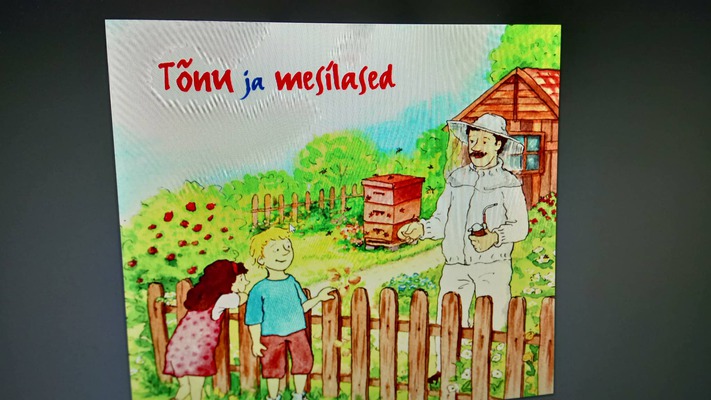
We designed the book visibly on the wall. The children looked at the pictures and the teachers read it. We learned where the bees live, what they eat, what makes them sick, and what tools are used to make honey.
At the end of the story, the kids got nice worksheets...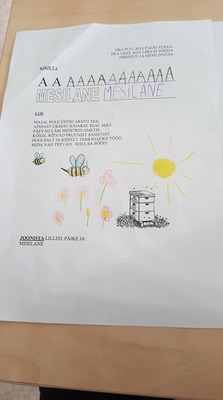
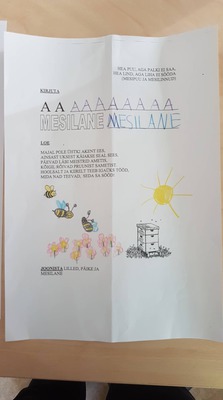
Later in the group, one of the girls drew pictures of the bees and spoke a little story on the bee.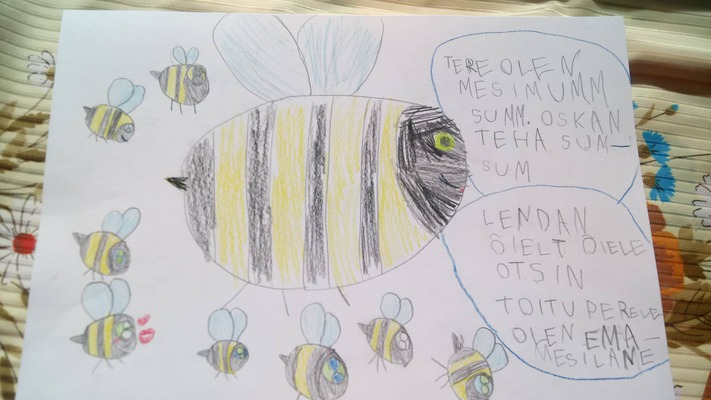
The group of Mesimummud also talked about bees. The bees were painted and flushed from plasticine.
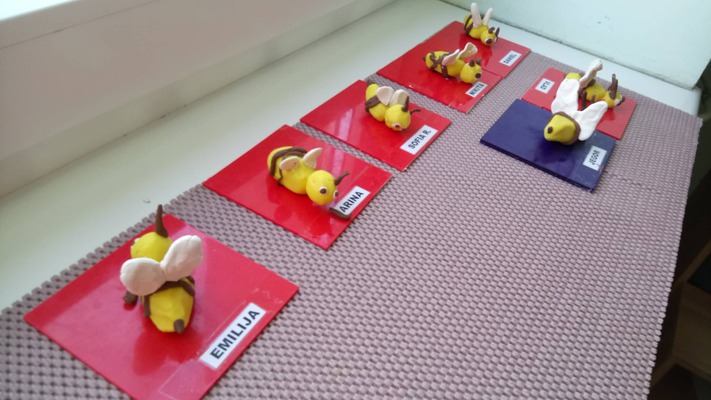
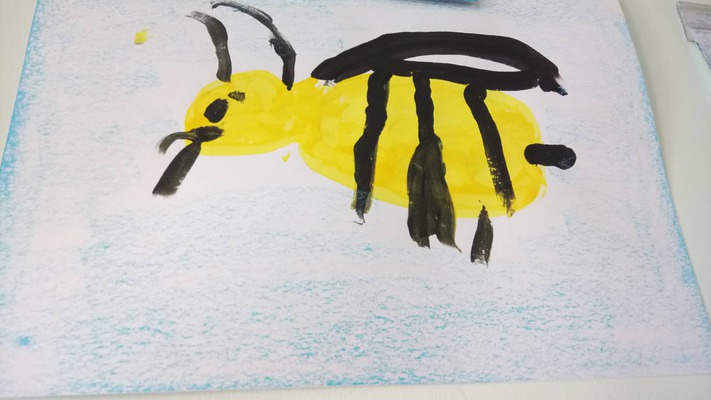
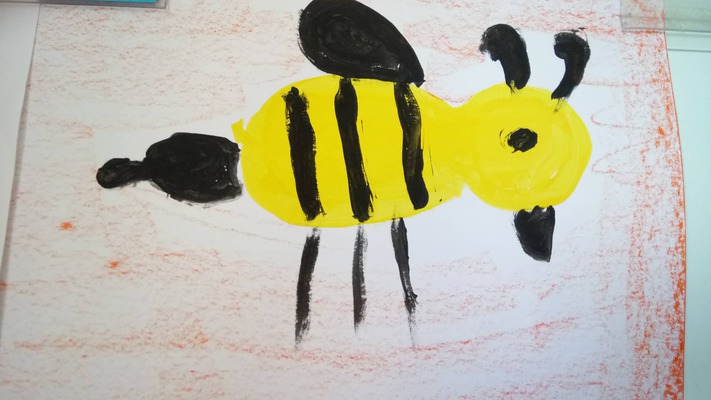
The children of the Ladybugs group are very well adapted to our moody climate of February! Children have been able to make sandcakes and we found snowdrops on February 27th.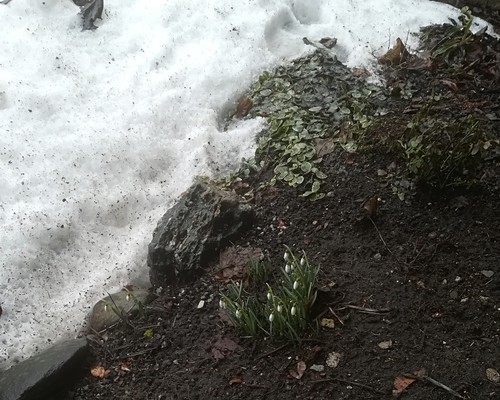
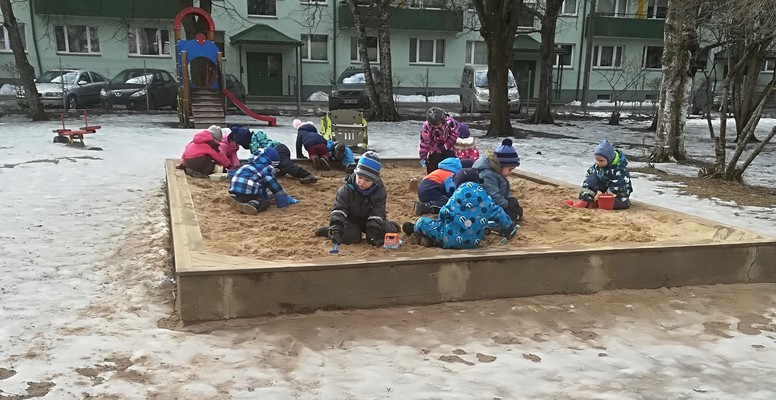
In March some groups is start to grow herbs...
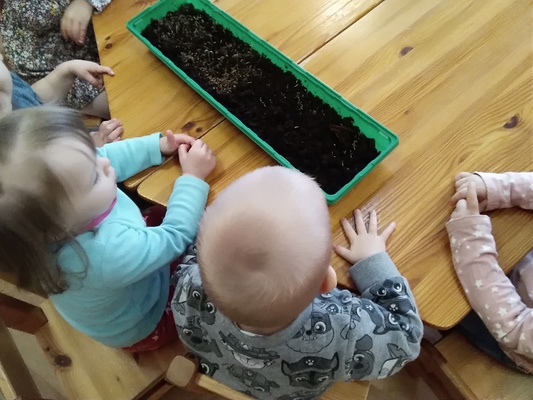
Now we can study together! The stages of Honey Bee metamorphosis shown here include:
1. Egg
2. Larva
3. Pupa
4. Adult Honey Bee
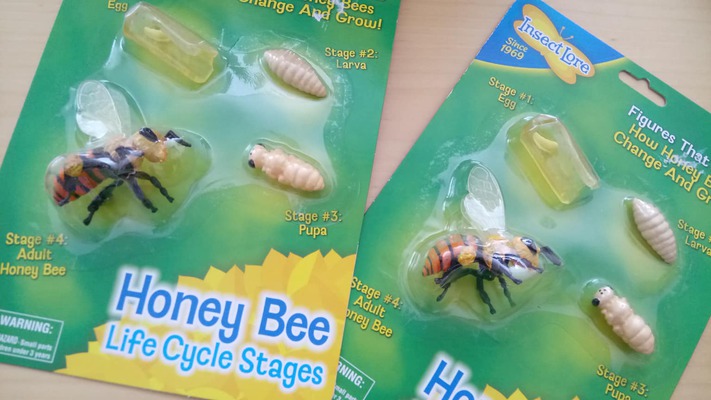
Lotted (preschoolers) got to know the life of bees and ants in the Natural History Museum in March 2019. There was possible to look into the anthill.
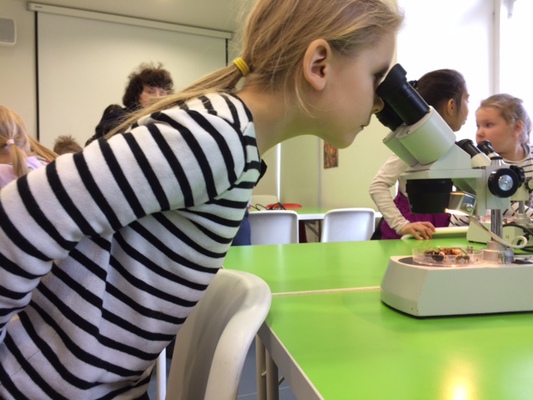
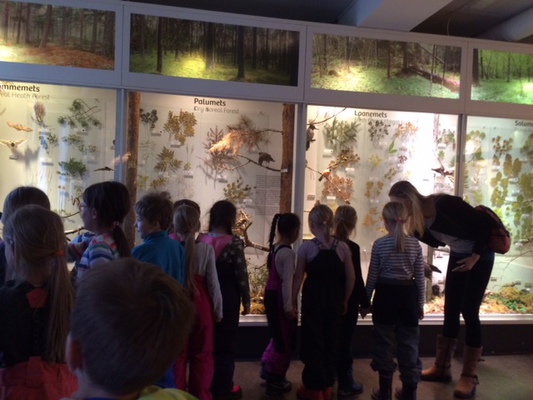
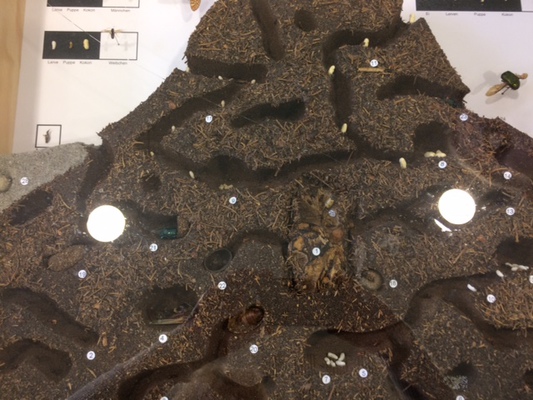

The teacher in group Lotted dressed up as a bee and went out to study with the kids. The bee was cold outside and she put a sweater on.
The children learned that the insects were still sleeping in February and at the end of the activity the bee went back to sleep.
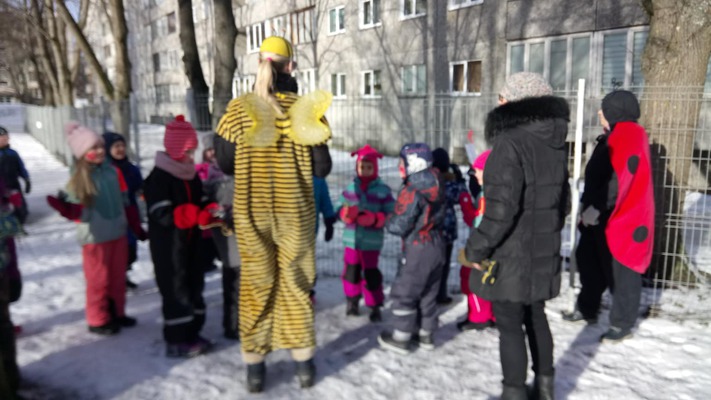
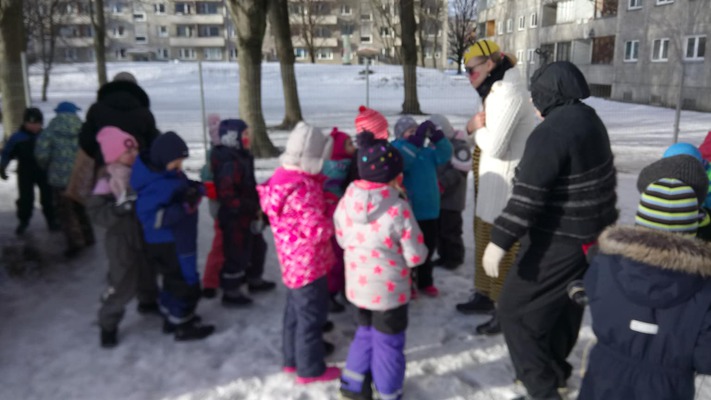
Climate research: it was studied by the group Mõmmikud in February (children 5-6 years old). They filled in a lot of worksheets.
They watched various weather events (thunder, snow, rainbow, rain, storm, sun, clouds and tornado). Talked about air temperature, its measurement, and various (air, water, and different body temperature) measuring instruments. Together, they were painted, read and puzzled over various weather events. In terms of weather phenomena, rainbow and tornado💨 are the most popular among the children of the group Mõmmikud.
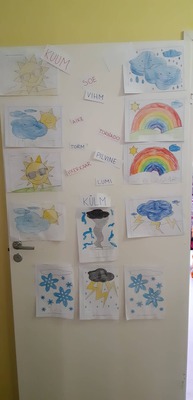
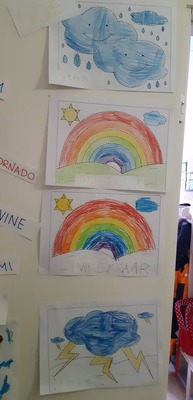
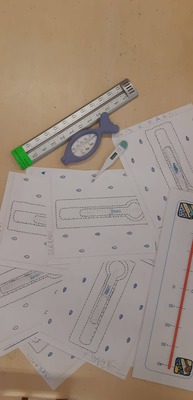
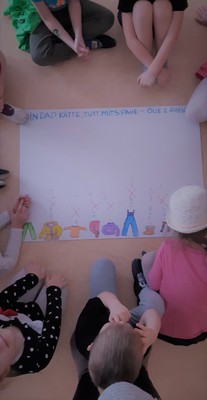
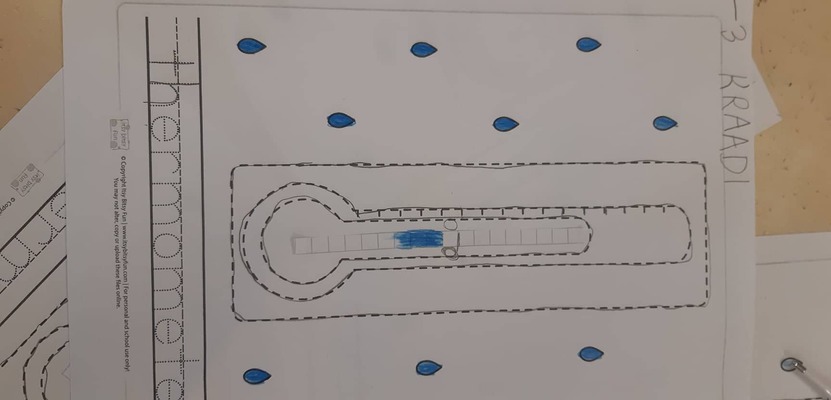
We have a weather station in our yard. Children can follow wind speed and direction, temperature. They can also fallow how much is in air humidity and mesure rainfall.
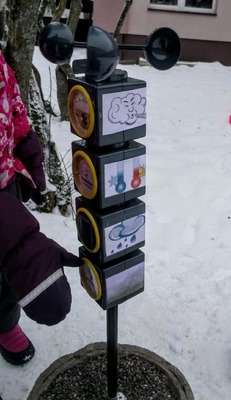
We celebrated the International Day of Warm Sweater. (In February). There were also activities related to a warm sweater in music tracks.
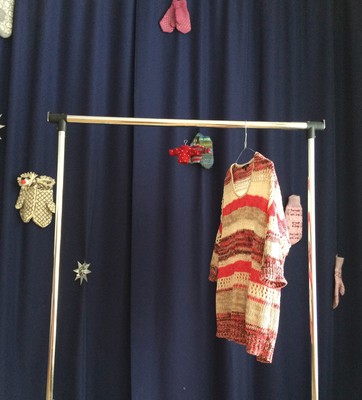
An example was learning rhythm...
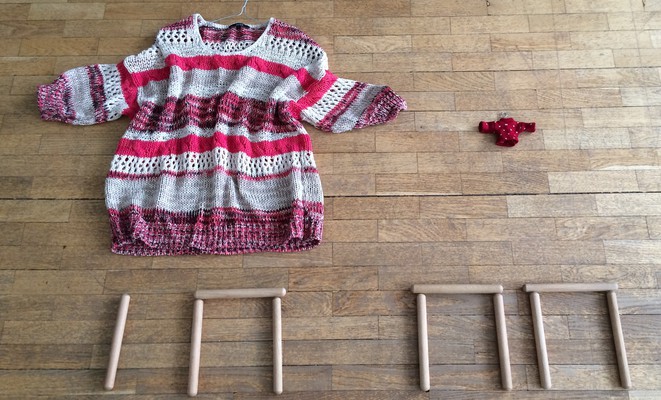
During the Friends' Day and Warm Sweater Week, Pöialpoisid learned that warm sweaters are made of woolen yarn. For the hearts of the Valentine's Day, the children scroll a warm colored yarn to keep the hearts warm outside. The hearts hung the kids on the reflective tree to make happy all the kindergarten children.
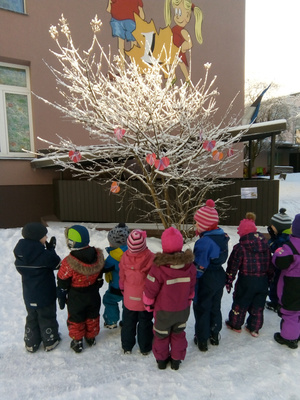
And the smallest children learned about different clothing items also...
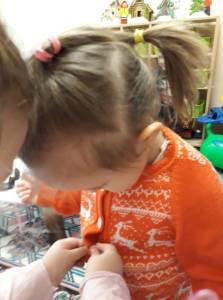
Group Sipelgad where also talking in January winter clothings. Children in this group are 5-6 years old (Estonian and Russian children). With the help of the weatherbear it is nice and interesting to learn how to dress in different seasons.
In January we played and discussed both Russian and Estonian, what could be the right outdoor clothing in winter to stay healthy during cold weather.
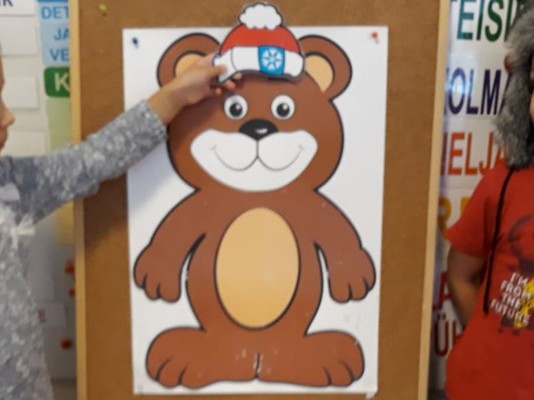

In January 2019 group Pöialpoisid (children are 4 years old) talked and looked at pictures of winter weather and winter wear.
They looked at the weather phenomena in the book "My Great Study Book".
The children ranked the pictures of the garments according to the order in which they need to dress (a bit went wrong too) and found those clothes that didn't fit in the yard during the winter.
The poem with moves helped us dress up in a fun way. The teacher asked misleading questions (does the sock come in hand?), this was funny for children.
Outside, the kids discovered that the snowman's weather is back and then, our little snowman got a bigger companion. It was a great month :)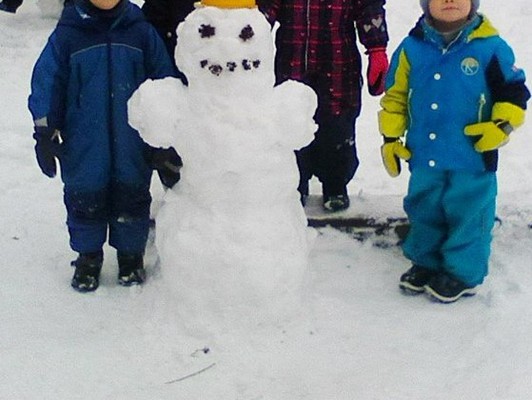
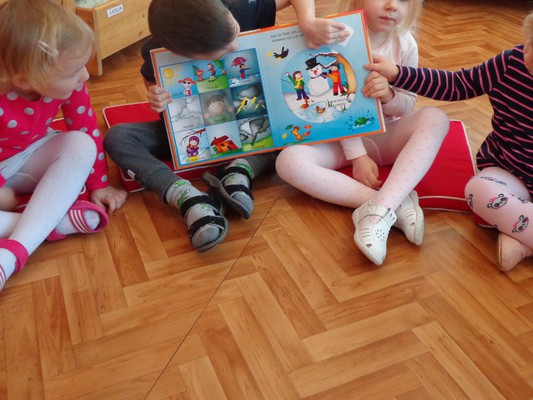
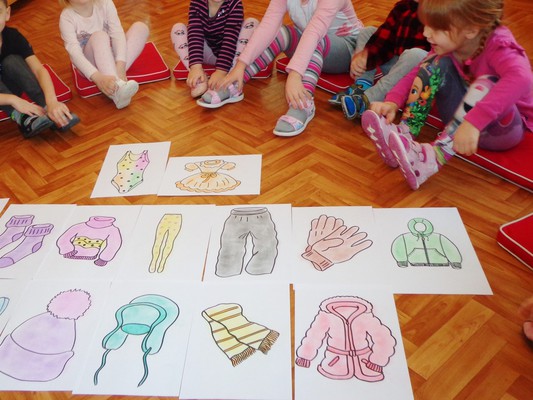
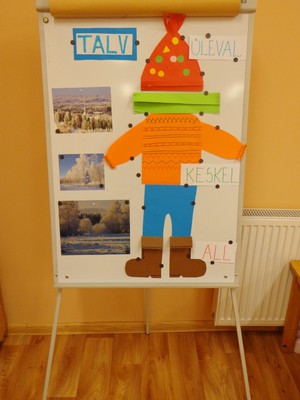
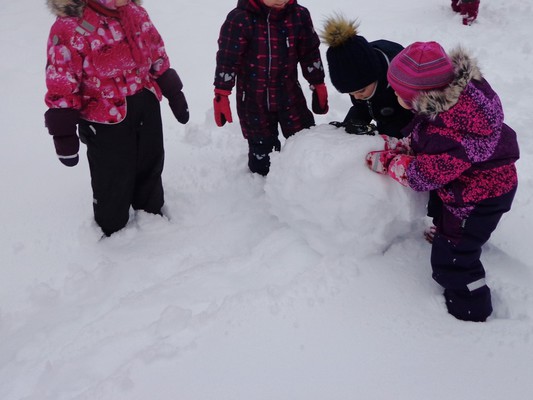
Group Mikid ja Minnid know why to wear warm clothes in winter? (7.01.2019)
Mikid ja Minnid are 1.5-2.5 years old. They worked in January on one of the themes: outdoor clothing. So the winter clothing was introduced.
For example, the teachers brought two puppets (boy and girl) to the group and the children put the dolls on the cloth. Hats were put on the head, socks were put on foot
gloves were put on and example sweaters were put on their back.
Later on, going to outside, the teachers, together with the children, were able to study the children's own items of clothing.
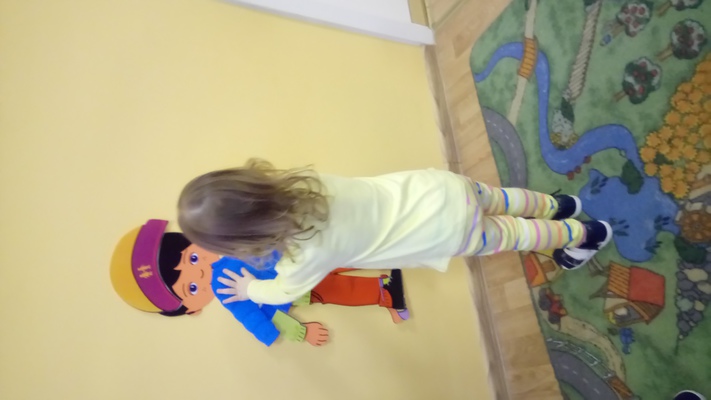
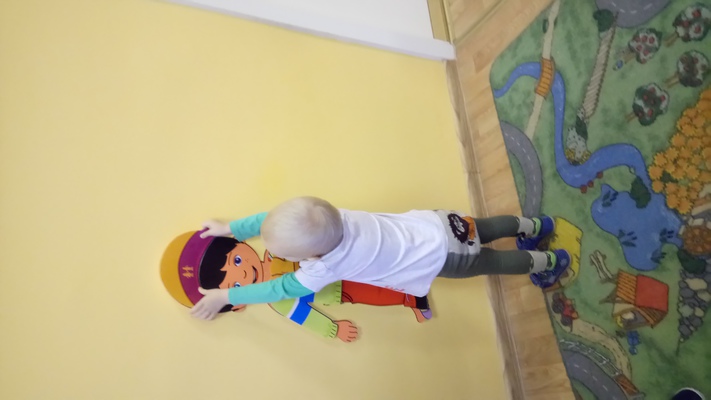
Tallinna Lehola Kindergarten blog
https://tallinnaleholalasteaed.wordpress.com/